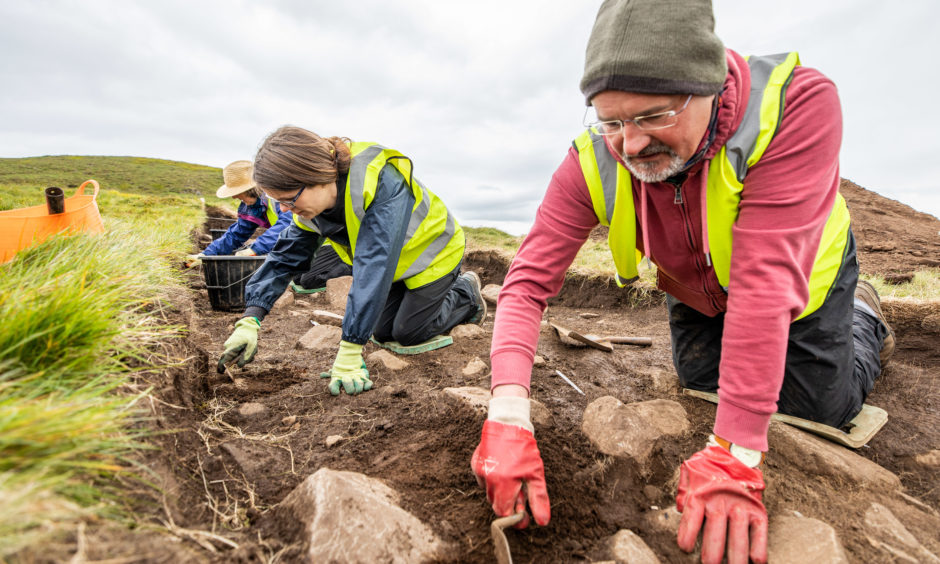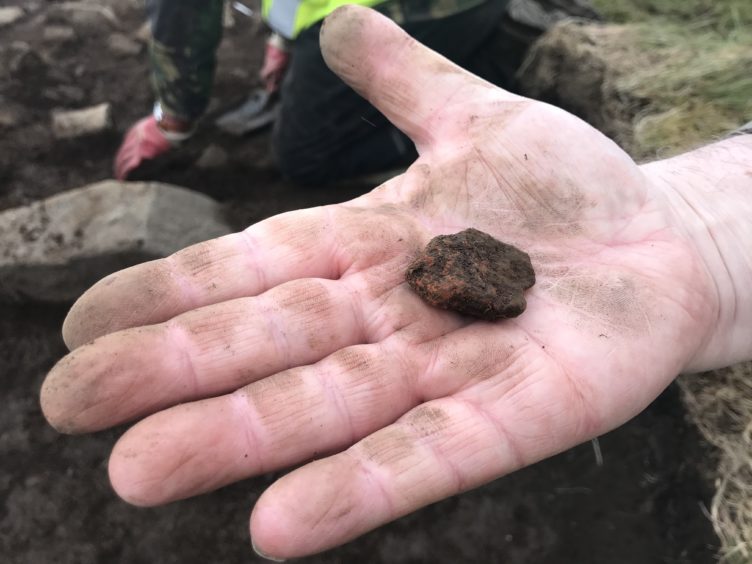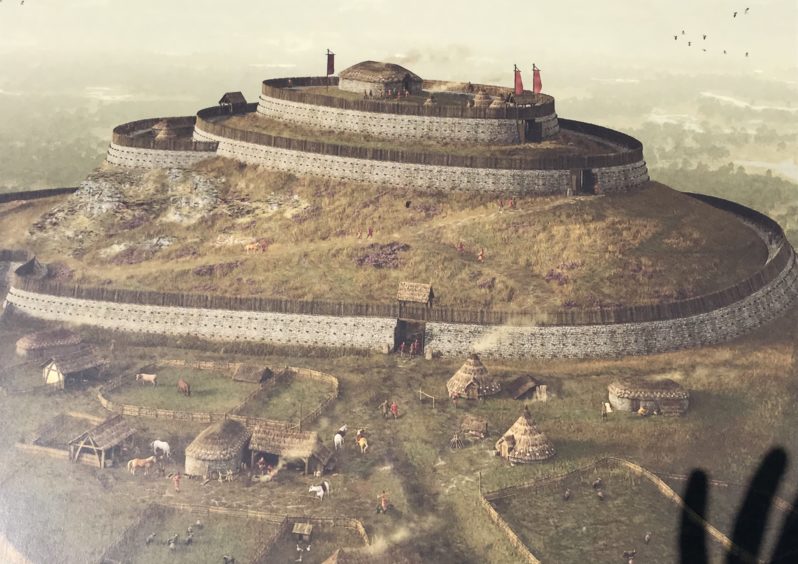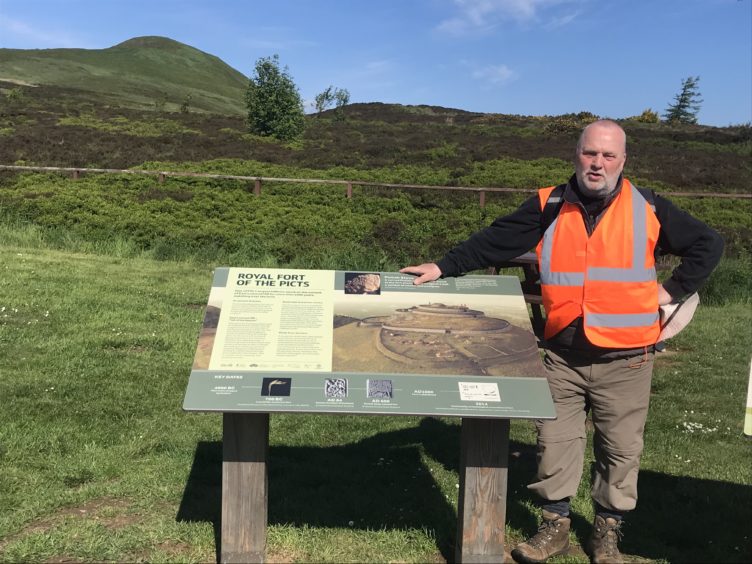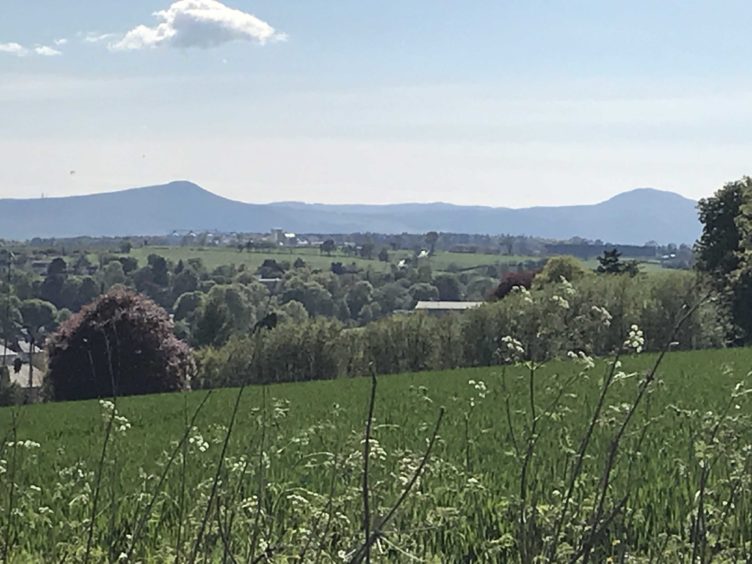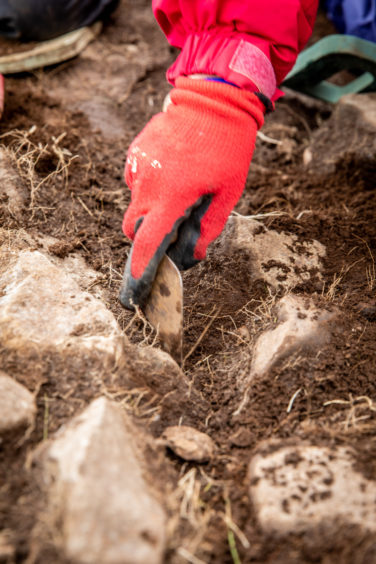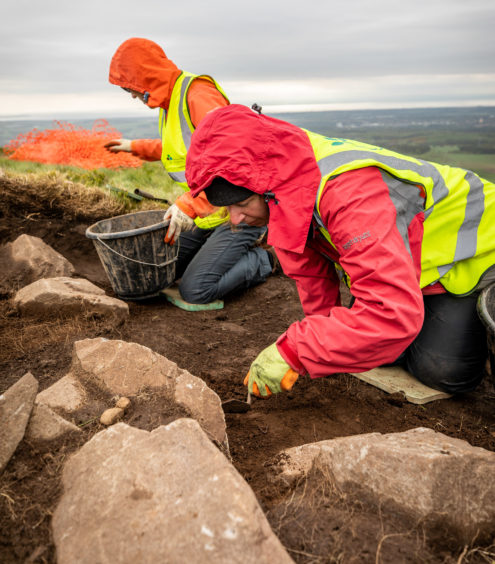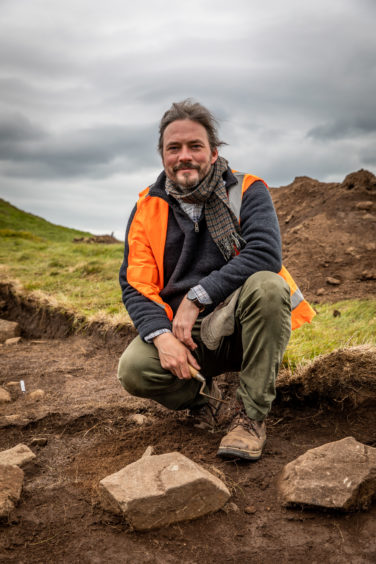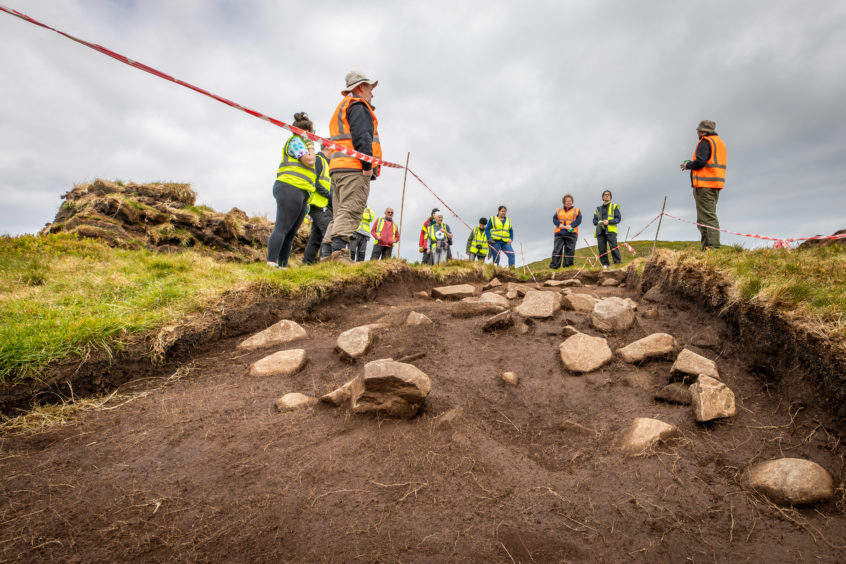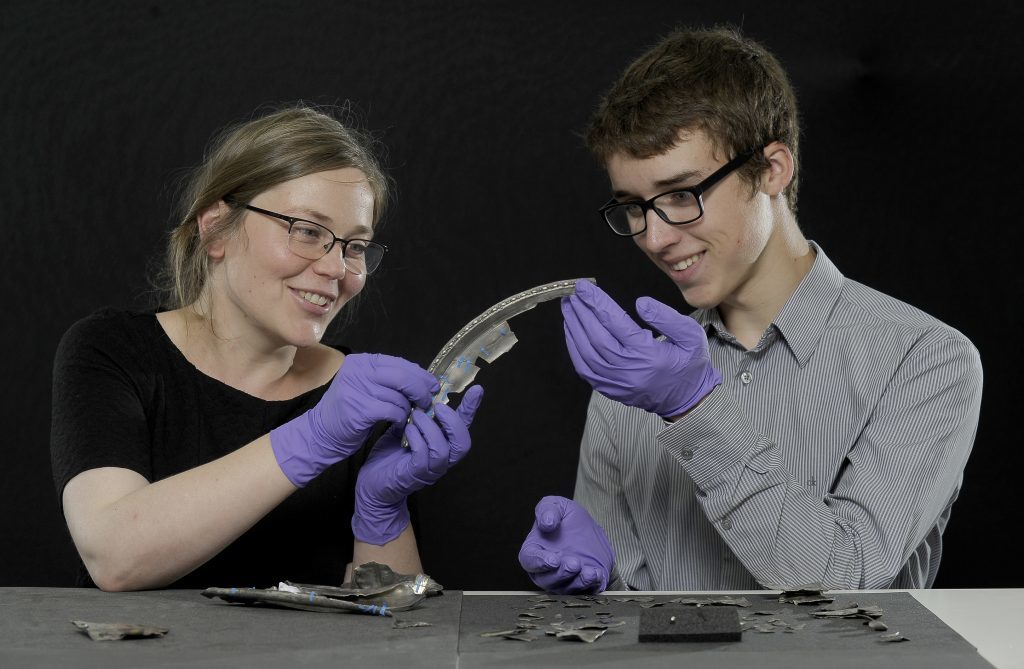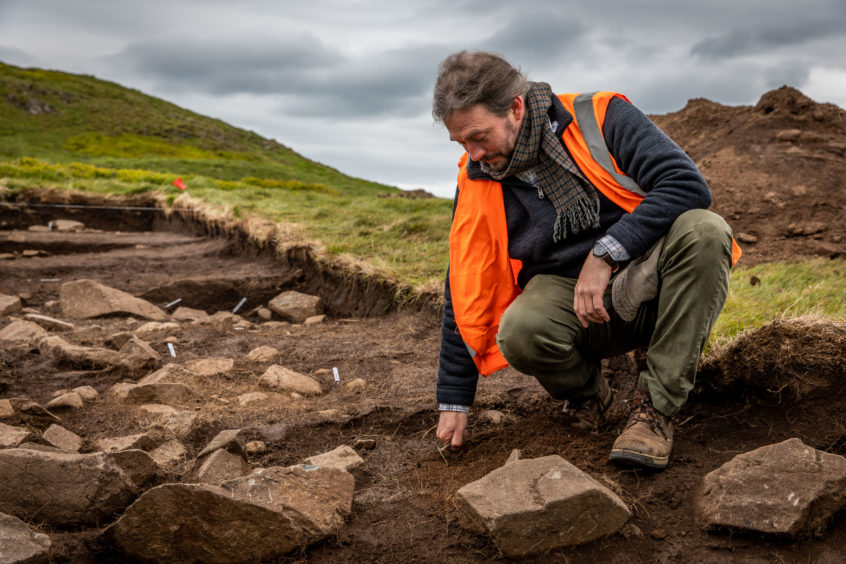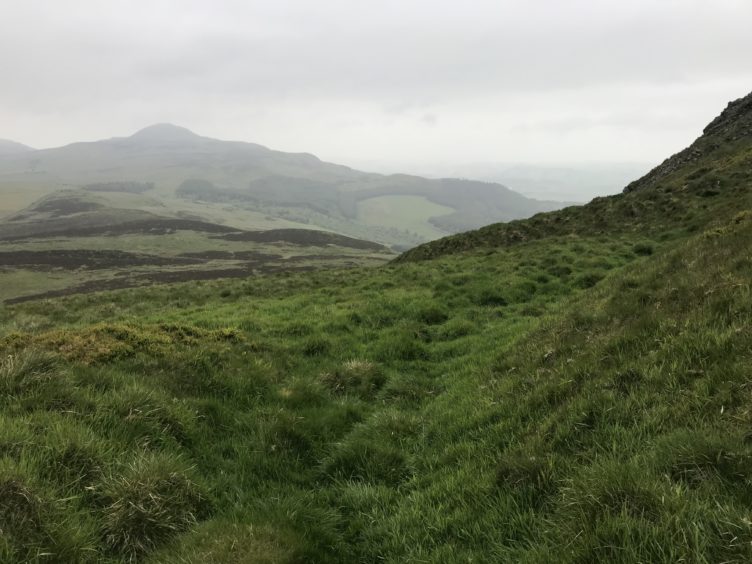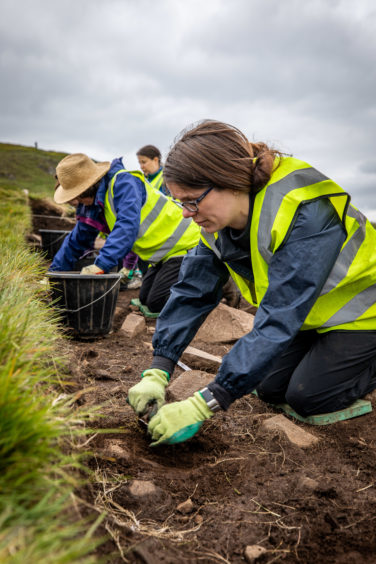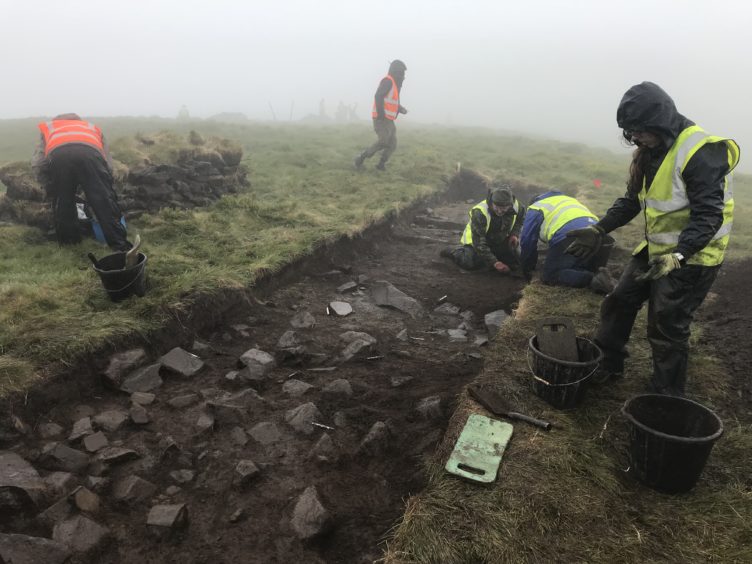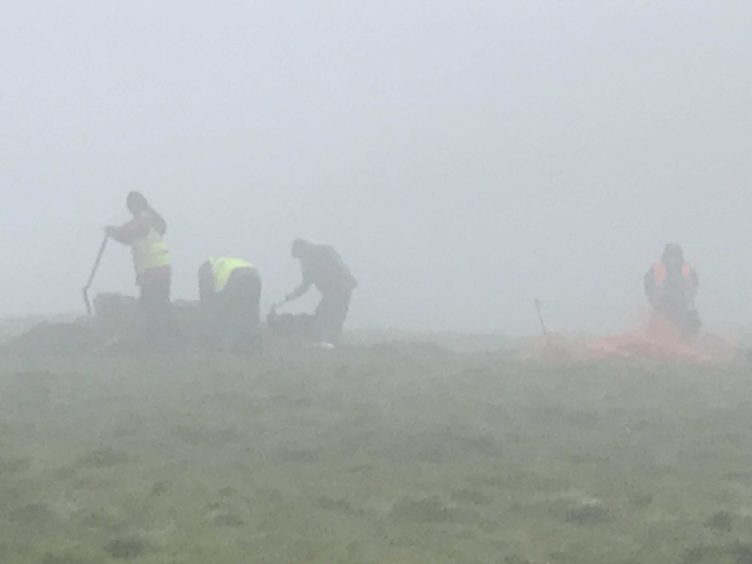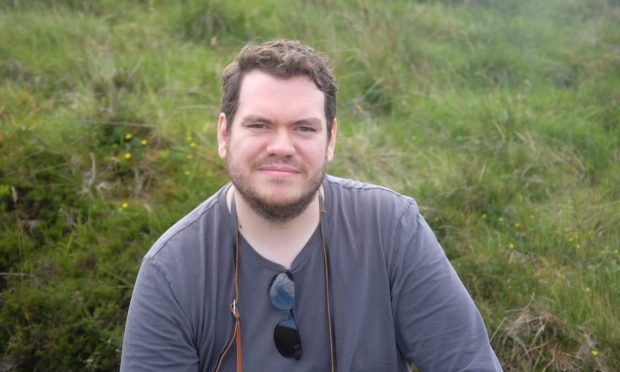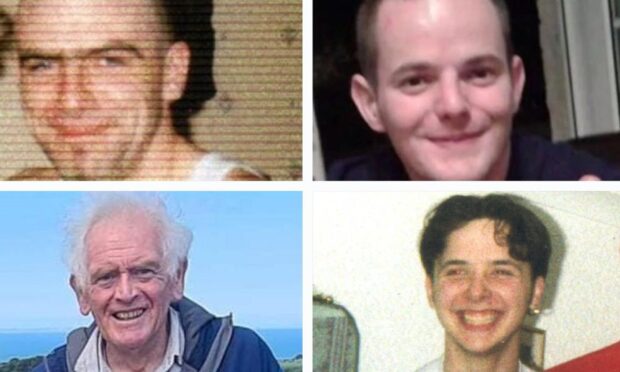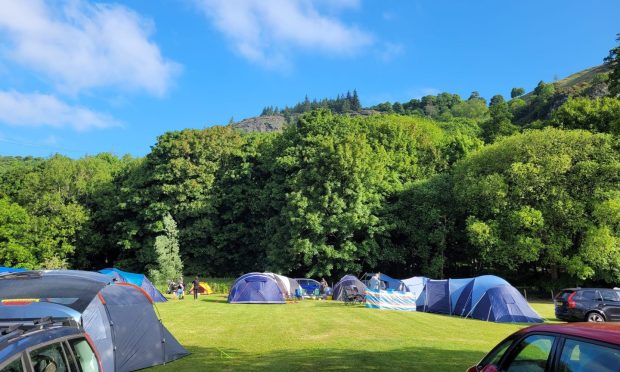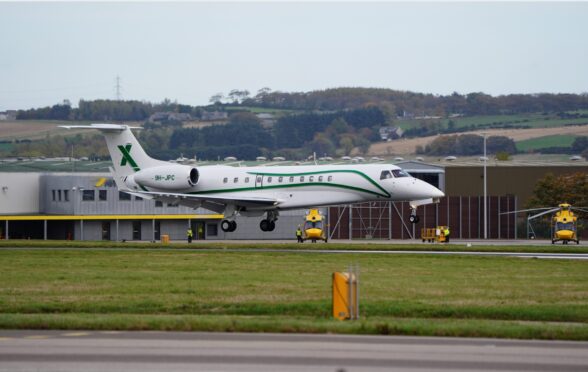Michael Alexander spent a day with an archaeological team on the East Lomond hill in Fife and discovered how recent digs could shed new light on Scotland’s early history.
Kneeling at the edge of a muddy trench as the weather closed in and the stunning views across the Fife landscape faded into the gloom behind me, it was remarkably engrossing to use a trowel to gently scrape back layers of soil – untouched for millennia – to potentially reveal archaeological evidence of an ancient settlement beneath.
The remains of a wall, a prehistoric flint arrowhead and the base of a kiln or furnace had already been discovered by volunteers in the days prior to my visit.
But who would have thought that my discovery of a 4000-year-old Bronze Age pottery fragment – possibly the “find of the day”, according to the lead archaeologist – could be so satisfying?
My small, yet significant, find was made amid ancient fragments of charcoal and bone when I joined an archaeological dig for a day on the southern shoulder of the East Lomond hill above Falkland.
Excavations by teams of professionally led community volunteers in 2014 and 2017 had already confirmed that one of Fife’s largest hill forts stood on the summit of the Kingdom’s second highest peak watching over the land below.
However, the latest dig – again directed by the Falkland Stewardship Trust and led by archaeologist Dr Oliver O’Grady – aimed to shed more light on the history of the Pictish fort that once dominated the landscape and to look for evidence of the early population’s relationship with the Roman Empire – in particular the period of the Severan campaign of 208-211 AD.
This was the brutal campaign of the Emperor Septimius Severus against the Caledonii in the north of the country.
The day began at the East Lomond car park where, having been issued with high-visibility vests and protective gloves, Falkland Stewardship Trust’s Project Director Joe Fitzpatrick introduced me to the group of volunteer archaeology excavators and gave an overview of the site and the aims of the dig.
The former Fife Council head of service in education, who retired four years ago, explained that around 60 volunteers from the Fife area were involved over three weeks plus pupils from nine of Fife’s secondary schools.
A key aim was to connect local people with their ancient landscape, helping them to understand and interpret the landscape around them, and to learn about Fife’s heritage and history.
“People have known there was a hill fort here for a considerable period of time,” Mr Fitzpatrick told The Courier as we set about walking up the extinct 300 million-year-old volcanic hill to reach the dig site just below the 448-metre summit.
“This hill fort is listed in the Royal Commission’s inventory of 1933 and it is a scheduled monument.
“What we have recently discovered however, is that there appears to be evidence of settlement outwith the scheduled area on the shoulder of the hill overlooking Glenrothes and Kirkcaldy towards the Forth.
“That’s where we are excavating and it’s exciting and new archaeology. What we are revealing is going to enhance our understanding of the story of East Lomond – because it is clearly a hill fort of some significance in a Scottish context.”
The 2017 dig was featured on the BBC’s Digging for Britain programme, and a key finding that year was when the team from St Andrew’s High School in Kirkcaldy found a collapsed Bronze Age cist.
That confirmed the site had been utilised for at least 2,700 years, if not longer, straddling the Bronze Age, Iron Age, Roman and Pictish periods.
Fragments were also found of a particular kind of pottery made in France – called E-ware – which is usually found at royal sites in Britain on the west coast.
It would have been used to transport red and purple dyes – not available locally – and suggests the site had connections with other “elite” hill forts of the Scottish Iron Age. Roman pottery fragments were also discovered.
The strategy this year, however, has been to dig a number of shallower trenches in order to test the potential extent of the settlement area.
Lead archaeologist Dr Oliver O’Grady who led the two previous archaeological excavations, explained how the trench sites had been “selectively positioned” after subterranean “anomalies” were identified by a geophysical survey.
One trench aimed to confirm evidence of a collapsed outer rampart that would have originally been stone with perhaps a turf superstructure and wooden palisade. Evidence has been found here of metal working and a hearth.
A second trench close to what is thought to be the original fort entrance has identified evidence of rotted posts, charcoal deposits, armlet bangle fragments, shale and an original Iron Age floor surface which seems to have been part of a massive prehistoric hut circle.
The third trench targeted another possible building with evidence of metal working slag and crucibles used by skilled craftsmen, while the fourth trench had found indications of a rarely found Pictish era building which likely had a thatched or heather roof.
The fifth trench, where I was deployed to work, was looking for evidence of a wide square building which might suggest Roman cultural influence.
The ancient geographer Ptolemy was employed by the Romans to sail around the Scottish coast and identify the main tribal groups in 150AD and the area now known as Fife was described as being home to the Venicones – possibly translated as ‘’the hunting hounds”.
However, little is actually known about the relations between the powerful and wealthy people of Fife’s hillforts, who would have dominated the Forth and Tay waterways at that time, and the Romans.
The discovery of Roman glass and pottery on site in 2017 and the earlier discovery of the Dairsie Hoard near Cupar – which was assessed by experts at the National Museum of Scotland – suggests that the people were close to Rome and may have been receiving diplomatic gifts and payments.
It is hoped the archaeology could help provide more clues as to the exact relationship between Fife’s people and ancient Rome.
“The Severan campaign in the 3rd century was really quite violent by all accounts,” said Dr O’Grady.
“The Romans land at Carpow near Newburgh, and we know of marching camps at Edenwood near Cupar and Auchtermuchty.”
Mr Fitzpatrick takes up the story.
“The people on top of this hill would have seen the Roman fleet sailing up the coast and part of the largest ever land army in Britain marching to meet up with the Legions coming up from Eboracum (York) before going north together against the Caledonii,” he said.
“But does the evidence we are finding here and the Roman weighted silver of the Dairsie Hoard suggest an occasional accommodation between the Romans and the locals?
“The relationship between Rome and the northern tribes was not always conflictual and it would make strategic sense for the Romans to be friendly with a powerful and influential elite who controlled not only rich farmland but also had access into the Forth and the Tay – the two main waterways into the heart of Scotland.
“It’s possible we have hidden or unwritten Roman history here in Fife’’
It’s a potential that has certainly captured the imaginations of volunteer archaeologists including Paisley-raised Bob Carchrie, 57, of Spittalfield, in Perthshire, who signed up to an archaeology degree at UHI in Perth last year after volunteering for a community dig at Kingseat, near Dunkeld.
The retired BT engineer and senior project manager, whose wife used to be a countryside ranger on the Lomonds, has been interested in archaeology since school, but only recently realised it’s probably what he should have pursued as a career.
“It’s my first time on a dig here and on one of my first days I found a flint arrow head that was potentially Bronze Age or earlier and still lethal,” he said.
“It’s not just about finding the artefacts, it’s about the underlying structures. The remains of wooden posts potentially 2000-years-old and the remains of hearths. You can let your imagination run riot – it’s open to interpretation.”
Mary Clarke, 71, a retired St Columba’s High School principal teacher of home economics, lives in Glencraig and has also become “hooked”.
She said: “It’s the anticipation and excitement of not knowing what you’ll find. The find is great but it’s wondering what’s there and getting your hands dirty.”
Joy Nicolson, 42, of Cupar, took annual leave from her job as an information analyst to take part in the dig.
She said: “I was sceptical at first but I’m really enjoying it. I drive past these hills going to work every day and now see them in a new light.
“The very first time we walked up here I didn’t even realise it was an Iron Age hill fort. Now the imagination can run riot and there’s clearly so much more to East Lomond.”
